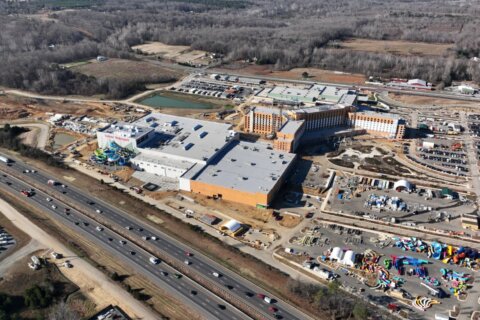The Chesapeake Bay’s bald eagle population has seen an unexpected spike in growth over the past few decades, going from nearly endangered, with just 60 breeding pairs, to about 3,000.
“The population has just had an astounding recovery,” said Bryan Watts, the Center for Conservation Biology director at Virginia’s College of William and Mary. He’s been researching bald eagles for decades. He said in the 1970s, when the chemical DDT was outlawed, the population’s low point reached a turning point.
In the 1980s, that population growth’s impact became more visible. The eagle population began to grow in the bay at a rate higher than anywhere else in North America, but evidence of food stress became more evident.
Food supply for eagles hasn’t been able to keep up and infighting has become common, the professor said. Watts added that the population began to reach its limits.
“So it sets up a class warfare between the haves and the have-nots and what we refer to as floaters,” Watts said. Floaters refer to birds that are breeding but don’t have their own territory, leading to more altercations with others.
As they are preoccupied with guarding their territory, males spend less time hunting, which has resulted in smaller broods.
“The young were starving in the nest,” he stressed. Despite the changes, Watts isn’t worried and said it’s a rare kind of recovery that nature will sort out by restoring balance to the population.
“It’s not something that we have the opportunity to see very often, so it’s been a thrill to see the recovery that we’ve had,” he said. “It’s very gratifying to see a species recover and recover to a point where they’re at saturation.”
The bay is an ideal home for bald eagles for a few reasons, according to the Chesapeake Bay Program, a regional partnership dedicated to the bay’s restoration. Since the Chesapeake is an estuary, the mix of freshwater and saltwater presents a variety of fish species for eagles to feed from.
Additionally, the bay’s low depth makes it easier for eagles to spot their prey.








